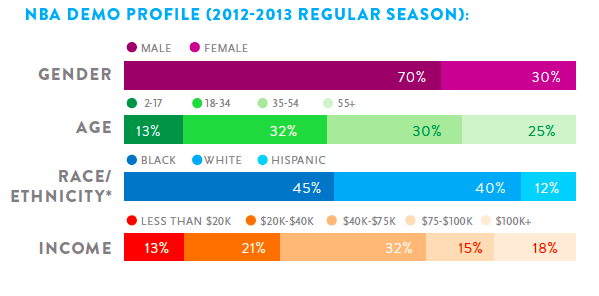
Big data analytics can act as valuable drivers in many industries by providing information that drives core business decisions. Sports industry has recently started catching up to leverage big data related services to enhance customer experience and thereby multiply revenue. From pre-match analysis to training, from coaching to player profiles, analytics can make a difference in scoring goals, signing players or engaging the fans.
The aggregation and analysis of data to optimize team performance and improve the decision-making process has transformed the sports industry. While we recognize the importance of a microsecond in athletics, latest innovation in big data services are sure to trigger a revolution in every aspect of sports industry like fan engagement, team performance.
Fan engagement and fan data
With big data services, sports teams now have access to fan data from various sources like social media, the web & other channels of communication. By understanding how fans engage with the sport or a team’s brand, decisions can be made about tailored sports advertising or broadcast content. Fan behaviour directly affects the ticket sales & television ratings of a sports team. Television ratings transform to a better sponsorship & higher spend in the next season and that’s how important fans could be for a team or a club.
Fan data is a comprehensive aggregation of their feelings and expectations of the team’s performance and achievements spread over the web. This data could come in from channels like social media, websites; anywhere on the web, actually. Teams consume this data in order to make quick clear decisions that resonate with the fans’ feelings. Let’s have a look at the type of fan data in the paradigm and how they can help teams and clubs to earn more trophies, get more sponsorships and increase net revenue.
Fan data consumption and Clustering
Fan data consumption can be the basis for customer segmentation; with big data we can not only track what kind of data fans are accessing but we can also have a location and time-based segmentation. Teams can cluster fans in different buckets and produce or create content based on the likes/dislikes of that bucket. Upon clustering, teams will understand the kind of products & services the fans consume and they keep developing similar content to increase engagement level.
Sports business is evolving from being a transaction based business to a relationship based business by engaging with fans on a regular basis and analyzing the kind of data shared on social media. Teams can now listen to their fans and even respond to them on a regular basis. This increases the engagement level of the fans with the team. As we all know that different fans have different needs and teams understand these needs and launch services accordingly.
Online ticket market
Technology in the form of online ticket sales has opened a secondary ticket market for the teams. By aggregating online ticket sales, teams understand if fans prefer traditional method of ticketing or online method. Online channels can include personalization and customization in ticketing that can further improve the fan experience. Customized discounts and offers can be introduced based on the data extracted with respect to secondary ticket market.
Team performance
Teams and the analytic companies have come up with a lot of tech-savvy sophistications that can optimize team’s performance on field. Cameras, sensors and wearables collect data pertaining to player performance. Managers, coaches and players are using data to design the training and fitness programs.
Here are a few examples as appeared on Forbes.
“In the UK, Premier League soccer team Arsenal has recently invested millions in developing its own analytics team to make better use of the data it is now collecting. One important data stream comes from 8 cameras installed around its stadium to track every player and their interactions. The system by sports analytics provider Prozone tracks 10 data points per second for every player, or 1.4 million data points per game. The system is also used to monitor 12,000 soccer matches around the world, which are all analyzed using automated algorithms as well as manual coding of every interaction with the ball to increase the accuracy and value of the analysis.
Wearable devices are increasingly used to track performance even more closely. In American football or rugby for example, injury levels have been reduced in the professional game due to wearable sensors that monitor the intensity of activity and impact of collisions, and compare this to historical data to determine when a player might be in danger of overexerting or injuring themselves. Teams in many sports have found that the cost of implementing analytics programs can quickly be recovered if they save the team having to pay for expensive players to sit out a season with injuries.“
How to extract fan Big data analytics?
Fan data is mostly found online in many forms and formats, but teams and clubs must look for relevant data that can enable them to make decisions, engage better with fans and also create new content. The results and insights of the analytics engine is more or less decided by the kind of data that goes in.
Teams can collect this data by web crawling; a process that involves searching through various components of the web to extract relevant data. Web crawling is the starting point of any analytics engine. Another important source of fan data could be social media networks that contain a plethora of data. Teams could consume this data by understanding fan sentiments and accordingly revamping its efforts in that area. Twitter crawls are very famous in conducting brand related monitoring; customer sentiments and trends can be monitored by scraping twitter data related to their team page or competitor’s team page. Data extraction can be an overhead if teams and clubs don’t know how to use this data with purpose. Data aggregation compiles information from various sources with the intent to prepare combined datasets for data processing; for e.g. Cricinfo’s player profile data. With aggregation, teams can aggregate similar fans together and provide them services that they desire.
Future?
Some sport enthusiasts or fanatics feel that too much technology in sports is killing the human factor in it. How can predictions and pre-match analysis change the true style of game? How can pure analytics drive out the mystery in playing a final or a big match? These factors may be subjective to deal with but “data never lies” and with big data analytics on the horizon, every bit of data can be used to extract value.






















